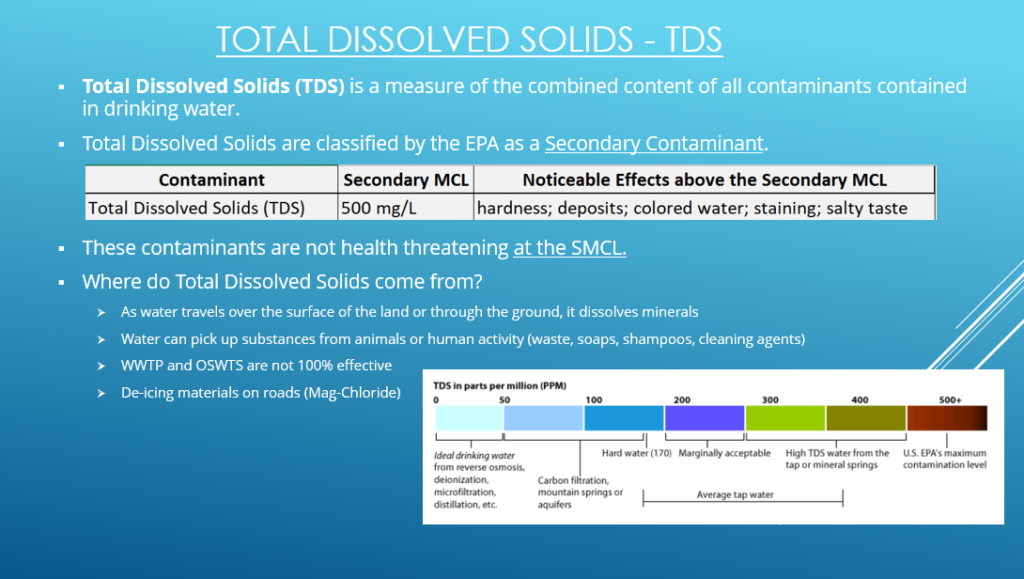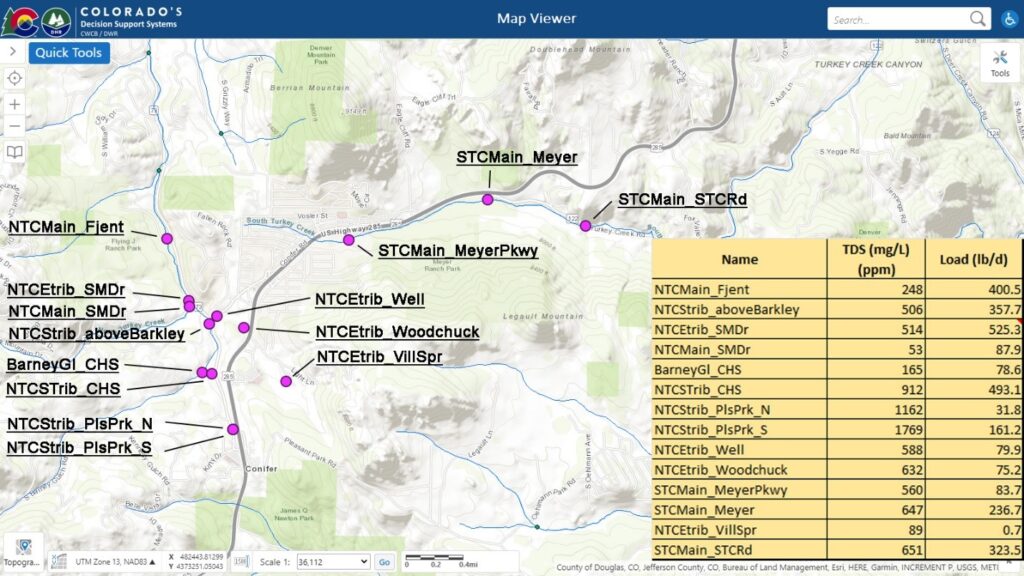Total Dissolved Solids, or TDS, is a general measure of water quality, measured as salinity, in terms of total content of dissolved ions in the water. These ions can be cations sodium (Na), potassium (K), calcium (Ca), among others; and anions chloride (Cl), sulfate (SO4), carbonate (HCO3), among others. These dissolved elements come from many sources. Natural sources include weathering of geologic formations at or near the surface of a watershed and wildlife. Human sources include discharge of wastewater that contains a wide variety of compounds such as human waste and cleansers, runoff from artificial surfaces, road de-icing and so forth. As the dissolve solids enter the flow of water out of a watershed they contribute to a load of dissolved elements heading downstream in the system. This load is typically represented as pounds per day (or tones per year).

Water Quality Standards
Water Quality standards have been established both at the federal level and the state level for many constituents present in water. Those standards are often based on use of the water and whether the water is surface water or groundwater. Standards are also classified as primary or secondary, with primary standards set for constituents with known direct health effects and secondary for impacts such as aesthetics or impacts on agriculture. Accordingly there are several types of standards are set for TDS. The federal secondary standard for TDS in drinking water is 500 milligrams per liter (mg/L) and Colorado has set a groundwater standard of 400 mg/L.
From the EPA Guidance
EPA has established National Primary Drinking Water Regulations (NPDWRs) that set mandatory water quality standards for drinking water contaminants. These are enforceable standards called “maximum contaminant levels” (MCLs) which are established to protect the public against consumption of drinking water contaminants that present a risk to human health.
EPA has also established National Secondary Drinking Water Regulations (NSDWRs) that set non-mandatory water quality standards for 15 contaminants. EPA does not enforce these “secondary maximum contaminant levels” (SMCLs). They are established as guidelines to assist public water systems in managing their drinking water for aesthetic considerations, such as taste, color, and odor. These contaminants are not considered to present a risk to human health at the SMCL.
CAC Water Quality Monitoring
The CAC Water Resources Study/Action Team has started to monitor total dissolved solids (TDS) at various points in Conifer. Three are tap water readings (Staples, Safeway, King Soopers, Church). All other readings are locations on main streams or tributaries in open channels or culverts.

TDS measurements by the CAC team are collected with a simple hand-held meter that measures the electrical conductivity and temperature of the water and converts those values to TDS in milligrams per liter based on a NaCl water standard. The values should be considered qualitative since the exact make-up of ions in the water is not known for each station.
The readings indicate that many surface water locations have TDS levels well above the federal SMCL of 500 mg/L and the Colorado groundwater standard of 400 mg/L. The CAC team aims to monitor this same set of locations on a monthly basis to track trends through seasonal variations in flow conditions
